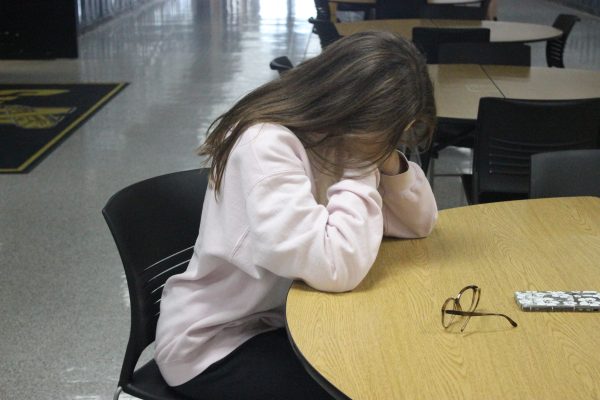Mental health awareness, education needed
Dealing with mental illness is one of the most challenging things a person can encounter in their lifetime. According to the National Alliance on Mental Illness (NAMI), one in five young adults between ages 13 and 18 struggle with mental illness. Many face difficulty finding help and/or treatment. It is estimated that up to 80 percent of those affected do not receive help.
Left untreated, it can affect every aspect of a person’s life from relationships, work, physical health and even school. It can follow them like a dark cloud, creating constant discord between them and everyone and everything in their lives.
For students struggling with mental illness, it can be a constant uphill battle to maintain grades and attendance, especially for those not receiving necessary care. Findings from NAMI reveal that up to 50 percent of students with an untreated mental illness drop-out.
Untreated and unaddressed mental illness is a gateway to a variety of issues, that can spiral into unmanageable problems; even possibly making them prone to other mental and or physical issues.
To those students, school is possibly the final possibility when it comes to getting help.
It is vital that teachers recognize the signs of mental health issues such as anxiety and depression. When a student’s well-being and/or ability to succeed is being hindered by mental illness, teachers should be equipped to direct them to resources or to someone who can help them.
On average a student might spend up to eight hours in school, which does not include the time spent participating in sports or other extracurriculars. Students spend most of their day going from classroom to classroom and often the people they see more than friends and family are their teachers. As some of the most prevalent people in students’ lives, teachers have the potential to spot and help struggling students.
Teachers who notice students struggling should make an effort to follow up with that student, and if necessary, they should report them to a counselor or a designated staff member.
Additionally, and most importantly, reporting is not the only way teachers can help students. Though school is typically about work and academics, it is vital that teachers connect with their students on a personal and emotional level. When it is obvious a student is being brought down by personal demons, a teacher simply inquiring about their day or pulling them aside to ask how they are doing can go can a long way.
Students in grades six through 12, only 48 percent of students think their teachers care about them, a study by Pearson Clinical revealed. Something as simple as a small act of compassion could make a significant impact.
Schools can improve how they handle students with mental health issues by providing clear and accessible information to students. Letting them know how to get help within the school and from outside organizations as well as how to recognize symptoms.
If schools and teachers made a diligent effort to identify and guide students dealing with this issues, it could drastically make a difference in the lives of many.

Gracie is a senior and is currently the co-editor of the Railroader as well as content editor and photo editor of the Newtonian. Outside of journalism...










